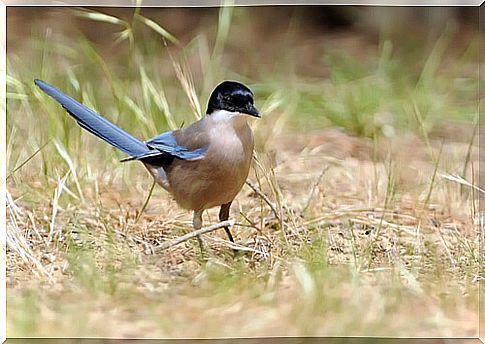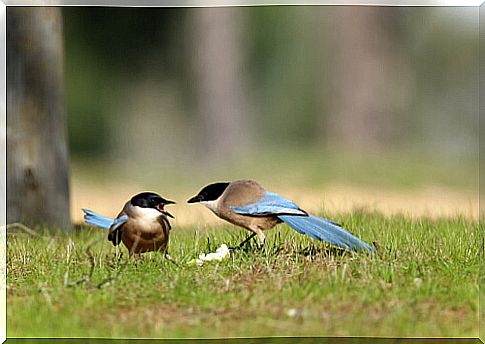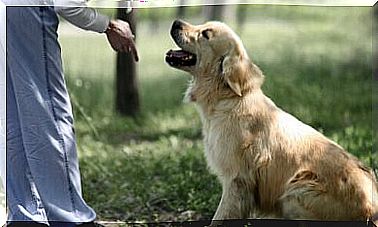Magpie: Characteristics, Behavior And Habitat

The blue magpie is a bird that belongs to the corvids and, although it is little known to readers in some localities, it is quite common in the center and south of the Iberian Peninsula.
With its characteristic blue tones, the magpie is a bird that resembles the jay. Typically, while the magpie is found in rural or even urban areas, the magpie generally dominates the wilder areas.
Blue magpie characteristics
This bird is unmistakable: with an anatomy similar to the magpie, it stands out for its black mask with white plumage, alongside its cream body and metallic blue wings.
This bird, only 35 centimeters tall, lives in flocks and eats various plant and animal foods, as it is a very adaptable animal. This allows it to survive and take advantage of human remains, landfills, as well as carrion; in fact, this bird is one of the protagonists of landfills and is also found in fruit tree monocultures in search of sweet fruits such as figs and grapes.
The reproduction of the magpie begins in April, when the pair is formed and the nest is built. The magpie nests are very handcrafted and are covered with moss and mud reinforcements, and are usually close together. Thus, couples look to have neighbors to face common threats.

magpie behavior
This bird has a behavior similar to that of other corvids: it is quite sedentary and moves in very agitated and noisy groups, in constant communication between its members. At night, more than 100 animals can gather on the perches.
Like crows and other birds in this group, the blue magpie is a very aggressive bird with predators, which makes it dare to attack birds of prey and other carnivores, especially in the breeding season.
This is an advantage for other animals in the forest: blue magpies and other corvids act as natural alarms, so they surround the predator and start screaming as they continually follow, which ruins their camouflage and stealth.
In addition, like other corvids, it is an extremely intelligent bird, which even shows some altruism, because these birds are able to distribute food among members of their species, even if they do not ask.

magpie habitat
Blue Magpies live in Mediterranean forests and grazing areas, especially in the southwest of the Iberian Peninsula, where it is common to see these birds fly in picnic areas and forests.
There is something very curious about the blue magpie, and it is the fact that there are only two populations of this bird in the world: the Iberian and Asian populations, which are separated by thousands of kilometers.
The fact is that, outside the Iberian territory, there are no blue magpies in the whole of Europe, which made biologists and other professionals suspect that the population of this bird could have been introduced and, therefore, constituted an invasive species.
One of the most widespread theories is that the blue magpies from Spain arrived from Asia in the 16th century, through exchanges with Portuguese sailors.
Corvids have been used as ornamental birds and pets for centuries because they are easy to train and trustworthy.
However, this fact was discarded a few years ago: remains of the Iberian magpie were found in Gibraltar. These fossilized remains, more than 40,000 years old, show that the Iberian species separated from the Asian species after the last ice ages that occurred in the Eurasian territory.








